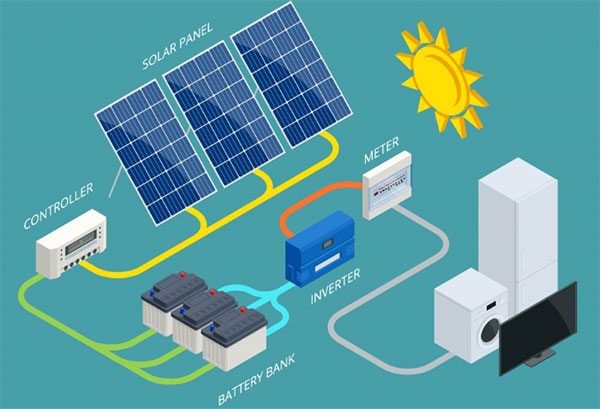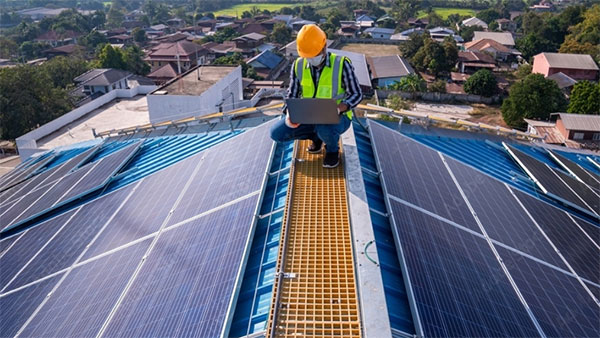
Understanding Solar Panel Types
Solar panels are essential devices for converting solar energy into electrical power. Their efficiency, cost, and overall performance depend significantly on the type of solar panel one chooses. There are primarily three types of solar panels: monocrystalline, polycrystalline, and thin-film. Each type has distinct features, advantages, and limitations based on their material composition, manufacturing process, and technological application.
Monocrystalline Solar Panels
Monocrystalline panels, made from single-crystal silicon, offer the highest efficiency rates, typically around 15-20%. They require less space due to their high efficiency and have a sleek black appearance. Their lifespan can extend up to 30 years, making them a long-term investment.
Polycrystalline Solar Panels
Polycrystalline panels consist of multiple silicon crystals. They have a blue, speckled look and offer moderate efficiency levels of 13-16%. These panels are less expensive to produce and thus more cost-effective, but they require more space for installation due to their lower efficiency.
Thin-Film Solar Panels
Thin-film panels use materials such as amorphous silicon, CdTe, or CIGS. They are the least efficient (around 10-13%) but are also the most affordable. These panels are versatile, flexible, and perform well in low-light conditions. They are ideal for large-scale installations where space is not a constraint.
Advantages and Limitations of Each Type
| Type |
Advantages |
Limitations |
| Monocrystalline |
Highest efficiency
Long lifespan (up to 30 years)
Better performance in high temperatures
Requires less space |
Higher cost
More energy-intensive manufacturing process |
| Polycrystalline |
More cost-effective
Good efficiency
Less energy-intensive manufacturing process |
Lower efficiency than monocrystalline
Requires more space for the same power output
Slightly shorter lifespan |
| Thin-Film |
Lowest cost
Flexible and versatile
Good performance in low-light conditions |
Lowest efficiency
Requires the most space
Shorter lifespan
Less durable |
When selecting solar panels, it's important to consider these factors in relation to your specific needs, such as space availability, budget, and energy requirements. Monocrystalline panels offer high efficiency but come at a higher cost, making them suitable for spaces where efficiency is a priority. Polycrystalline panels strike a balance between cost and efficiency and are ideal for those with moderate energy needs and budget constraints. Thin-film panels, while the least efficient, are the most affordable and adaptable, making them suitable for large installations where space and flexibility are crucial.

Solar Panel Efficiency
Solar panel efficiency is a critical factor in determining the effectiveness and value of a solar energy system. It refers to the ability of a solar panel to convert sunlight into usable electricity. The higher the efficiency, the more power a panel can produce from a given amount of sunlight.
How Efficiency is Measured in Solar Panels
Efficiency in solar panels is typically measured as a percentage. It's calculated by dividing the power output of the panel (in watts) by the amount of solar energy the panel is exposed to (also in watts). For instance, if a solar panel receives 1000 watts of sunlight and produces 150 watts of electrical power, its efficiency is 15%.
The efficiency of solar panels is influenced by several factors, including the type of material used in the panel, the quality of manufacturing, and the environmental conditions where the panel is installed. Innovations in solar technology continue to enhance efficiency rates.
Comparing Efficiency Rates of Different Panels
- Monocrystalline Panels
- Efficiency: Typically between 15-20%.
- Features: Made from a single, pure crystal of silicon.
- Polycrystalline Panels
- Efficiency: Usually in the range of 13-16%.
- Features: Composed of multiple silicon crystals fused together.
- Thin-Film Panels
- Efficiency: Generally around 10-13%, but some newer types can reach higher.
- Features: Made from a thin layer of photovoltaic material (like amorphous silicon, CdTe, or CIGS) deposited on a substrate.
When evaluating solar panels, it's important to balance efficiency with other factors like cost, durability, and the space available for installation. While monocrystalline panels offer the highest efficiency, they also come at a higher price. Polycrystalline panels offer a middle ground in both cost and efficiency. Thin-film panels, despite their lower efficiency, can be the most cost-effective and are versatile in terms of installation.
In conclusion, the choice of solar panels should be based on an individual's specific requirements, considering the efficiency, cost, available space, and environmental conditions of the installation site.
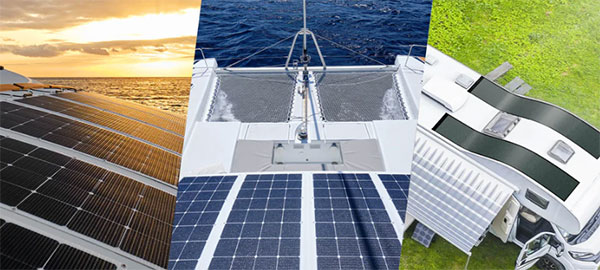
Cost Analysis
When considering the adoption of solar panels, a thorough cost analysis is essential. This analysis must encompass the initial investment required for installation, the long-term savings on energy bills, and any potential financial incentives available.
Initial Investment vs Long-Term Savings
- Initial Investment
- The initial cost of solar panel installation can vary widely depending on factors like the size of the system, the type of solar panels used, and the complexity of the installation.
- Average costs can range from $15,000 to $25,000 for residential systems, after accounting for federal incentives.
- This investment includes the cost of the solar panels, inverters, mounting hardware, wiring, and installation labor.
- Long-Term Savings
- Solar panels significantly reduce monthly electricity bills, with savings dependent on the size of the installation and local electricity rates.
- Over 20-30 years, a typical residential solar panel system can save homeowners between $10,000 and $30,000 in total.
- The lifespan of solar panels, often exceeding 25 years, ensures sustained savings over time.
- Break-Even Point
- The break-even point, where the savings equal the initial investment, typically occurs within 7 to 10 years after installation.
- Factors influencing the break-even point include local energy costs, solar panel efficiency, and the amount of sunlight the installation site receives.
Incentives and Rebates for Solar Panel Installation
- Federal Solar Investment Tax Credit (ITC)
- This is a significant financial incentive, allowing homeowners to deduct a portion of their solar panel installation costs from their federal taxes.
- State and Local Incentives
- Many states and localities offer additional incentives, such as tax credits, rebates, and solar renewable energy certificates (SRECs).
- These incentives can further reduce the net cost of a solar panel system.
- Utility Company Programs
- Some utility companies offer incentives, including rebates and net metering programs, where homeowners can sell excess electricity back to the grid.
- Financing Options
- Solar leases and power purchase agreements (PPAs) allow homeowners to install solar panels with little to no upfront costs.
- However, these financing options may offer less financial benefit in the long term compared to purchasing the system outright.
In summary, while the initial investment in solar panels can be substantial, the long-term savings, combined with various incentives and rebates, make solar energy a financially viable option for many homeowners. It's important to conduct a personalized cost-benefit analysis to understand the full financial implications of installing solar panels.
Energy Needs Assessment
Conducting an energy needs assessment is crucial for determining the right size and type of solar panel system for your home. This assessment involves calculating your home's energy requirements and then matching the solar panel output to meet these needs effectively.
Calculating Your Home’s Energy Requirement
- Review of Electricity Bills
- Start by examining past electricity bills, typically over the course of a year, to determine your household's total electricity usage in kilowatt-hours (kWh).
- The average U.S. household consumes about 10,400 kWh per year, but this can vary based on factors like home size, number of occupants, and usage patterns.
- Energy Consumption Breakdown
- Identify the major energy-consuming appliances and systems in your home, such as heating and cooling systems, water heaters, and large appliances.
- Understanding where and how energy is used in your home can help in making more targeted energy-saving changes.
- Peak Demand Analysis
- Analyze the times of day when your energy usage is highest, as this will impact the design and capacity of the solar panel system.
- Peak demand often occurs in the evenings or during hot summer months when air conditioning usage is high.
Matching Solar Panel Output to Your Energy Needs
- Solar Panel Capacity Calculation
- The capacity of a solar panel system is measured in kilowatts (kW). To match your energy needs, calculate the system size needed to generate your average daily or monthly kWh usage.
- This calculation considers factors like the geographic location of your home, average sunlight hours, and the efficiency of the solar panels.
- System Sizing Example
- For a home that uses 10,400 kWh per year in a region with an average of 4 sunlight hours per day, a system size of about 7 kW would typically be sufficient.
- This calculation is based on the formula: Total Annual kWh Usage / (365 days * Average Sunlight Hours per Day) = Required System Size in kW.
- Overproduction and Net Metering
- It's often advisable to install a system that produces slightly more energy than you consume to account for cloudy days and increased future energy needs.
- Net metering policies can allow you to sell excess energy back to the grid, providing additional savings or income.
- Professional Energy Assessment
- For a precise calculation, consider hiring a professional to perform an energy assessment. This assessment will provide a more accurate estimate of your home's energy requirements and the ideal solar panel system size.
In summary, assessing your home's energy needs is a critical step in the solar panel installation process. It ensures that the solar panel system you choose is appropriately sized to meet your energy consumption, leading to optimal performance and cost savings.
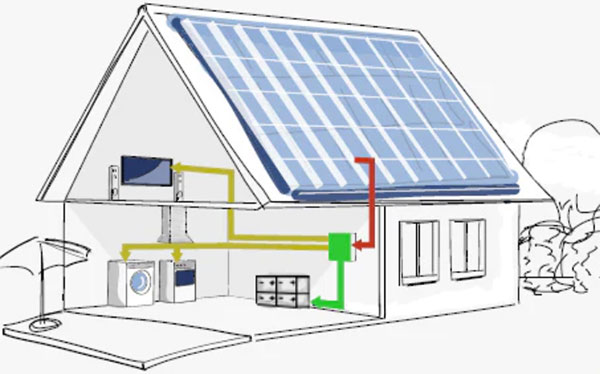
Durability and Lifespan
The durability and lifespan of solar panels are critical factors in evaluating the long-term value and effectiveness of a solar energy system. Understanding these aspects ensures that you make an informed decision about the type of solar panels that best suit your needs.
Understanding the Lifespan of Solar Panels
- Average Lifespan
- Most solar panels have an average lifespan of 25 to 30 years. However, this doesn't mean they stop producing electricity after this period; it typically means their energy production has decreased significantly, often to about 80% of their original capacity.
- Warranty Periods
- Manufacturers often offer a warranty that guarantees a certain level of performance over a specified period. For example, a common warranty might guarantee 80% performance for up to 25 years.
- End-of-Life Performance
- At the end of their lifespan, solar panels don't just stop working; their efficiency gradually decreases. Proper maintenance can extend their effective lifespan and maintain higher efficiency levels for a longer period.
Factors Affecting the Durability of Solar Panels
- Material Quality
- The quality of materials used in solar panels, such as the silicon type and the durability of the panel frame, significantly impacts their longevity.
- Environmental Factors
- Environmental conditions like extreme temperatures, high winds, and hail can affect the durability of solar panels. Panels designed to withstand such conditions usually last longer.
- Maintenance and Care
- Regular maintenance, including cleaning and inspection for damage, can significantly extend the life of solar panels.
- Avoiding physical damage and ensuring proper installation are also key to prolonging their lifespan.
- Technological Advancements
- Technological improvements in solar panel manufacturing have led to more durable and longer-lasting panels. Newer models tend to have better lifespans and durability compared to older versions.
- Performance Degradation Rate
- Solar panels typically degrade at a rate of about 0.5% to 1% per year. This rate can vary based on the panel type and the environmental conditions they're exposed to.
In conclusion, while solar panels are a long-term investment, their efficiency and performance do decrease over time. The rate of this decrease and the overall lifespan depend on the quality of the panels, environmental conditions, and maintenance practices. When choosing solar panels, consider these factors to ensure that you select a system that will provide sustainable and efficient energy production for many years.
Installation Considerations
Proper installation is crucial for maximizing the efficiency and lifespan of solar panels. Several key factors come into play, from site assessment to deciding between professional or DIY installation.
Site Assessment for Solar Panel Installation
A thorough site assessment is the first step in the solar panel installation process. This involves evaluating factors such as the orientation of your roof, the angle of sunlight, potential shading from trees or other structures, and the structural integrity of the installation site. Optimal orientation in the Northern Hemisphere is typically south-facing, with an inclination angle that equals the latitude of the location to maximize sunlight exposure. The assessment should also account for local weather patterns, as regions with higher levels of sunlight will yield more energy.
Professional vs DIY Installation: Pros and Cons
- Professional Installation
- Pros:
- Expertise and Experience: Professional installers have the necessary skills and knowledge to ensure that the system is installed correctly and efficiently.
- Warranty and Reliability: Many solar panel warranties require professional installation to remain valid.
- Time and Convenience: Hiring professionals saves time and the hassle of figuring out complex installation details.
- Cons:
- Cost: Professional installation can be expensive, often adding a significant amount to the overall cost of the solar system.
- Less Control: You have less control over the installation process and timeline.
- DIY Installation
- Pros:
- Cost Savings: Doing the installation yourself can significantly reduce the overall cost of the solar system.
- Personal Satisfaction: There’s a sense of accomplishment in installing your own energy system.
- Cons:
- Complexity and Risk: Solar panel installation can be complex and involves risks, particularly when working on roofs.
- Warranty Issues: DIY installation might void warranty terms.
- Time-Consuming: It requires a significant amount of time to learn and perform the installation correctly.
Whether choosing professional or DIY installation, it's important to comply with local building codes and regulations. This often involves obtaining the necessary permits and having the installation inspected upon completion. Additionally, understanding the electrical grid connections in your area is crucial, especially if you plan to use net metering.
In summary, the installation of solar panels requires careful consideration of various factors. These include conducting a detailed site assessment and weighing the pros and cons of professional versus DIY installation. Making informed decisions in these areas is key to ensuring the efficient and safe operation of your solar energy system.
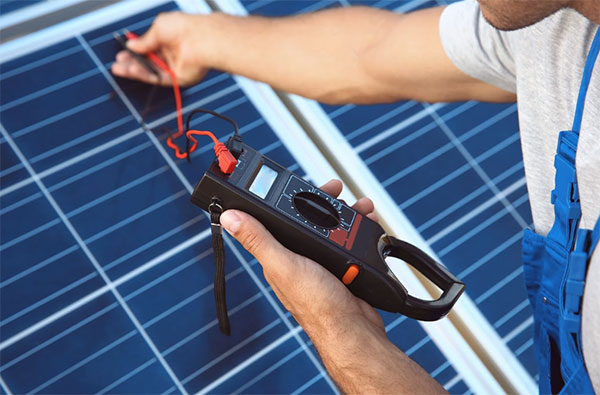
Warranty and Maintenance
Understanding the warranty and maintenance aspects of solar panels is essential for ensuring their long-term performance and reliability. A comprehensive approach to both can protect your investment and maximize the efficiency of your solar energy system.
Types of Warranties Offered for Solar Panels
Solar panel warranties generally fall into two categories: performance warranties and product warranties.
- Performance Warranties
- These warranties guarantee that the solar panels will produce a certain percentage of their rated power output over a specified period. Most manufacturers promise that panels will operate at above 80% of their rated capacity for about 25 years.
- Performance warranties ensure that your panels remain effective in generating electricity over their lifespan.
- Product Warranties
- Product warranties cover the physical panel itself and protect against defects in materials or workmanship. These typically range from 10 to 12 years.
- If a panel fails due to a manufacturing defect or premature wear and tear under normal conditions, the manufacturer will repair or replace the panel under this warranty.
Routine Maintenance and Long-term Care
While solar panels are generally low-maintenance, regular checks and upkeep can extend their lifespan and maintain high efficiency.
- Cleaning
- Panels need cleaning to remove dust, dirt, leaves, and other debris that can block sunlight and reduce efficiency. In most climates, cleaning them once or twice a year is sufficient. However, in particularly dusty or pollen-heavy areas, more frequent cleaning may be necessary.
- Inspection
- Regular inspections can help identify and address potential issues like loose mounting brackets, frayed wires, or cracks in the panels. An annual professional inspection is advisable to ensure all components of the solar system function optimally.
- Monitoring System Performance
- Many solar systems include monitoring software that allows you to track energy production and identify any dips in performance, which could indicate an issue with the system.
- Addressing Potential Issues
- If you notice a significant drop in power output or physical damage to the panels, it's essential to consult with a professional. They can assess whether the issue is covered under warranty and suggest the appropriate course of action.
Proper maintenance and understanding warranty coverage are crucial for the long-term success of a solar panel installation. Regular care minimizes the risk of unexpected breakdowns and ensures your solar panels continue to provide clean, renewable energy efficiently for many years.






